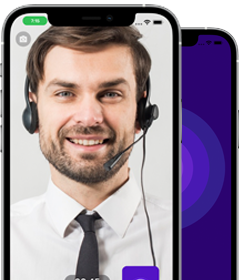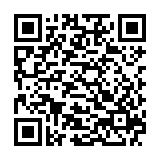In 2025, the interpreting world is experiencing a shift. It’s no longer enough to translate words or phrases from one language to another. Audiences—especially in media, marketing, healthcare, and education—expect content that sounds like them, that feels like home. That’s where hyper-localization comes in.
Hyper-localization goes beyond standard language translation. It means tailoring content to reflect regional dialects, cultural references, idioms, humor, and social norms that resonate with particular groups. From subtitled streaming content in Lagos to health campaigns in rural India, accuracy is no longer just about language—it’s about local identity.
Interpreters and language service providers (LSPs) are at the center of this trend. They’re adapting quickly, but not without challenges. Let’s explore how hyper-localization is reshaping interpreting services, what it means for the interpreters themselves, and the tools that help them stay up-to-date.
What is Hyper-Localization—And Why Now?
Traditional localization focuses on adapting content for a country or language group. Hyper-localization drills deeper down to towns, regions, or even neighborhoods, recognizing the subtle but powerful ways language and meaning change across borders.
For example:
- A Spanish interpreter localizing content for Mexico City will use different expressions than one working on content for Buenos Aires.
- Subtitles for a Nollywood film watched in Nairobi may need to be adapted to Kenyan Swahili, not just general Swahili, to land properly.
- A healthcare interpreter working with a patient from Durban may need to account for Zulu-English code-switching that wouldn’t apply in Johannesburg.
Why the push now? Two reasons:
- Audience expectations: Global audiences are more culturally aware and connected. They can tell when content “misses the mark.”
- Tech expansion: Thanks to platforms like Netflix, YouTube, and TikTok, regional content is booming, and needs to be interpreted with precision.
Hyper-localization is becoming essential in subtitling, multimedia voiceovers, and user-generated content. It’s not a luxury anymore—it’s a competitive necessity.
Interpreters on the Front Line of Change
While most hyper-localization news focuses on translation, interpreters are increasingly feeling the pressure to adapt in real time. Whether they’re interpreting live events, virtual meetings, healthcare consultations, or courtroom proceedings, the demand for regionally accurate language is growing.
Interpreters now face:
- Higher client expectations: Clients want interpreters who are not just bilingual but bicultural, with specific regional familiarity.
- Dialect matching: In healthcare, matching patients with interpreters who speak their exact dialect is becoming a standard for improving trust and care outcomes.
- Context-sensitive delivery: Tone, humor, idioms, and social etiquette vary wildly across regions. An interpreter must know when a direct translation won’t work, and adjust on the fly.
As noted by Language Insight, cultural relevance is crucial to meaningful communication, and interpreters, unlike translators, have to make those decisions in real time.
The Challenges: It’s Not Just About Speaking the Language
The road to hyper-local interpreting isn’t smooth. Here are some of the most prominent challenges interpreters face:
- Lack of Resources
Training materials and glossaries often focus on standard language versions. Regional variations are rarely documented, especially for lesser-known dialects or indigenous languages.
- Inconsistent Demand
One week, an interpreter may need to speak Haitian Creole with a northern dialect. The next week, they may be asked to work in French with Congolese inflection. This inconsistency makes specialization difficult and training more complex.
- Technology Gaps
AI interpreting tools—while improving—still struggle with regional accents, slang, and cultural nuance. Automatic subtitling or speech recognition often fails to capture dialectal variations.
Tools Helping Interpreters Keep Up
To meet growing hyper-localization demands, interpreters are turning to new tools and strategies:
- Dynamic Terminology Databases
Platforms like Pairaphrase and others are expanding their capabilities to support dynamic glossaries that can be filtered by dialect or region. This allows interpreters to prep with specific phrasing based on client geography.
- Cultural Training Modules
Some LSPs are now offering regional cultural competency training. These go beyond language and cover body language, etiquette, historical context, and even taboos.
- Speech Recognition Customization
More advanced interpreters are working with ASR platforms that allow for accent training—meaning the software learns from a specific interpreter’s regional input over time.
- On-Demand Peer Networks
New interpreter communities and apps are enabling real-time peer consultations. If an interpreter encounters a tricky regional phrase, they can quickly ask someone from that region for insight—something beneficial during live events or court cases.
Who’s Driving the Demand?
Hyper-localization is especially crucial in sectors where trust and connection matter most. These include:
- Healthcare: Patients feel more comfortable when they hear their own dialect and phrasing, especially in vulnerable situations.
- Legal settings: Misunderstanding a colloquial phrase in court can change the outcome of a case.
- Marketing and Media: Cultural resonance is key to brand loyalty and engagement. A funny slogan in Johannesburg might fall flat in Cape Town if the dialect or humor misses.
The Future of Interpreting is Local
Looking ahead, hyper-localization is likely to become an expectation, not a bonus. For interpreters, this means:
- More specialized training
- Closer collaboration with AI tools
- Tighter integration into content creation and client planning
But above all, it means embracing the full richness of human language—not just what people say, but how they say it, where they’re from, and why it matters.
In a world that’s becoming more connected and more diverse at the same time, hyper-localization doesn’t just help people understand each other. It helps them feel seen and heard.





0 Comments